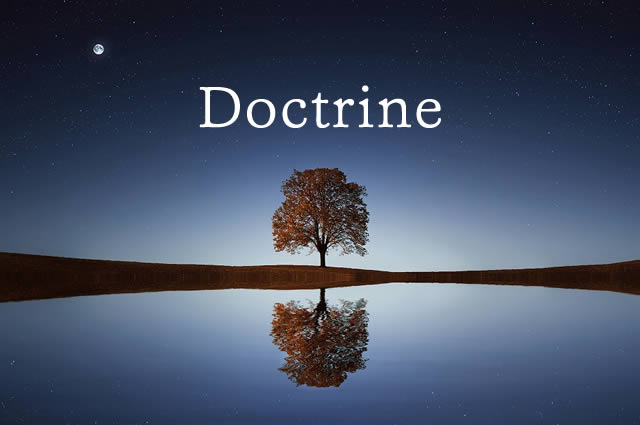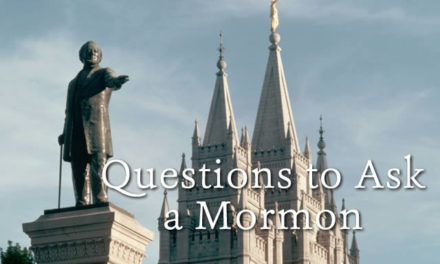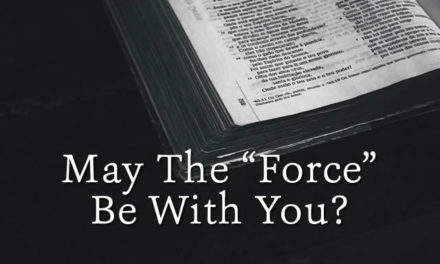A test very similar to this was given to a class on Christian apologetics at a Christian high school. The results revealed serious misunderstandings at the most basic levels. Research in recent years by the Barna Research Group has shown many Christians hold views discordant with historic Christian orthodoxy. For example, they recently asked whether absolute moral truths change according to the circumstances. Only 22% believed in the existence of absolute moral truth. That is a significant drop from 38% at the beginning of 2000.
DOCTRINE QUIZ
1. Is the word “Trinity” in the Bible? ___ Yes ___ No
2. Is the Father alone God? ___ Yes ___ No
3. Is Jesus Christ God equally with the Father? ___ Yes ___ No
4. Is the Holy Spirit God equally with the Father? ___ Yes ___ No
5. How many Gods are there? ______
6. Jesus today is…, ___ A man only ___ Divine only ___ Divine and human
7. Are the Father, Son, and Holy Spirit the same Person? ___Yes ___ No
8. Is the Holy Spirit a personage like the Father? ___ Yes ___ No
9. Which of the following is a correct statement?
The Trinity is defined as,
___ Three Gods in one?
___ Three Persons in one God?
___ Three Persons in one Person?
10. Which of the following are omnipotent, omniscient, and omnipresent?
___ Father ___ Son ___ Holy Spirit (Mark all that are correct)
11. Is the Father “greater” than the Son? ___ Yes ___ No
12. Is the Father “better” than the Son? ___ Yes ___ No
13. Did the Father create the Son? ___ Yes ___ No
14. Is Jesus Almighty? ___ Yes ___ No
15. When Jesus became man He…
___ Set aside His divinity ___ Added humanity to His divinity
16. How did Jesus rise from the grave?
___ In the same crucified body ___ A spirit ___ A different body
17. Who raised Jesus from the dead? (Mark all that are correct)
___ Father ___ Jesus ___ Holy Spirit
18. How important is the doctrine of the Trinity?
___ Most ___ Very ___ Somewhat ___ Not very ___ Not
19. Do you believe the Trinity can be proven from the Bible? ___ Yes ___ No
20. Can you show the Trinity from the Bible? ___ Yes ___ No
Bonus Question. Would you like to know more about the Trinity? ___ Yes ___ No
Answers and Discussion
1. Answer: No. However, it’s absence is irrelevant because the doctrine of the Trinity is there. The word was coined to express the concept of three within one. Many other words that express biblical doctrines do not occur within the text of scripture such as theocracy, millennium, and rapture.
2. Answer: No. See Isaiah 48:12-16 where Jehovah (speaking) says He is being sent by Jehovah (the Father) and His (Holy) Spirit.
3. Answer: Yes. If Jesus were not fully divine, or equal in His nature with the Father, then His sacrifice for us on Calvary would be insufficient. Also, Jesus said, “He that hath seen me hath seen the Father” (John 14:9). No finite, or created, being could ever compare themselves with the infinite God.
3 and 4. Answer: Yes. All three Persons of the Trinity are equal in their nature and attributes. Each is eternal, omnipotent, omniscient, and omnipresent. The Holy Spirit is a personal being, having the attributes of personality, and is also eternal (Hebrews 9:14). Example; If the Spirit is an eternal Person then He necessarily must be divine and equal with the Father for only God is eternal.
5. Answer: One. The ‘threeness’ of the Trinity refers to the Persons. The unity of the Trinity refers to the essence, nature, or, that which makes God be God. The essence or nature of God is not divisible into three parts which many of the analogies to the Trinity imply (i.e., egg, water, etc.).
6. Answer: Divine and human. Philippians 2:6 and 7 says of Jesus that He was, “…in the form of God…. But…took upon himself the form of a servant.” The word “upon” is a word indicating addition to what He already was. Also, I Timothy 2:5 says there is “one mediator between God and man, the man Christ Jesus.” So, today in heaven our mediator is a man who is also eternal deity.
7. Answer: No. The three Persons of the Trinity exist simultaneously. This is illustrated in the baptism of Jesus described by Matthew 3:16,17 which says, “…and he saw the Spirit of God descending like a dove, and lighting upon him: and lo a voice from heaven saying, This is my beloved Son….” All three Persons are in this event proving they are not the same Person. Also, refer again to Isaiah 48:12-16 where all three Persons of the Trinity are represented in an Old Testament passage.
8. Answer: Yes. The Holy Spirit has the attributes of personality, intellect (I Corinthians 12:8), emotion (I Thessalonians 1:6) and will (I Corinthians 12:11) just as does the Father.
9. Answer: Three Persons in one God. Heretical groups teach three persons in one person (United Pentecostals teach modalism and Jesus Only), and three gods in one god (Mormonism).
10. Answer: All Three. Each Person of the Godhead is all powerful, all knowing, and everywhere present.
11. Answer: Yes. However, the term ‘greater’ must be understood in their positional relation to one another. The Father is the “first” Person of the Trinity, the Son is the “second” and the Spirit the “third.” However, each is equal in every attribute of deity. Just as a President is ‘greater’ than a Vice President so the Father is “greater” than the Son.
12. Answer: No. The term ‘better’ implies superior in some fundamental way as in a superior being. Jesus is “better” than the angels (Hebrews 1:4) because is a superior being to them.
13. Answer: No. The Father “begat” the Son which is an eternal relationship but He did not create the Son in any sense of the word.
14. Answer: Yes. Jesus said, “All power is given unto me in heaven and in earth.”
15. Answer: Jesus added humanity to His divinity. Many Christians incorrectly assume that when Jesus left heaven to be born of Mary He set aside His deity for the time He was here. That is not the case. He “Made himself of no reputation” (Philippians 2:7) which means that He set aside the shekinah glory and His prerogatives as deity to relate to us on a human level. In that way we can follow His example because He relied upon the Holy Spirit as we are supposed to.
16. Answer: In the same crucified body. Jesus said at John 2:19-21, “Destroy this temple and in three days I will raise it up…. But he spake of the temple of his body.” When Jesus said these words the body He was referring to was the one He lived His life in, the one the disciples knew. Therefore, the term “it” in the above verse must refer to that same body. To interpret it otherwise would mean Jesus was lying to His disciples.
17. Answer: All Three Persons in the Trinity raised Jesus from the dead. In the verse cited above Jesus said He would raise His own body from the grave. Acts 2:24 says, “Whom God hath raised up….” Romans 8:11 says, “But if the Spirit of him that raised up Jesus from the dead dwell in you, he that raised up Christ from the dead shall also quicken your mortal bodies by his Spirit that dwelleth in you.”
18. Answer: Most. The doctrine of God is the foundational doctrine in any religion. In Christian doctrine everything flows from the nature of God. Understanding any doctrine of the Christian faith begins with understanding the Trinity and the attributes of God. It is the foundation of our faith and Christ is the Chief Cornerstone.
19. Answer: Yes. The method to use to demonstrate the Trinity is fourfold. First, to show there is only one God (Deuteronomy 6:4). Second, to show that the Father is called God (1 Peter 1:17). Third, to show that Jesus is called God (John 1:1). And finally, to show that the Holy Spirit is called God (Acts 5:3,4). The conclusions possible are 1) That the Bible is hopelessly contradictory, or 2) That the three Persons are the One God.
20: Answer: You can now!
Bonus Question: Answer: YES.
Conclusion
Without a solid understanding of our doctrinal basics our ability to discern truth from error is severely limited. This is why so many “winds of doctrine” blow through the church and lead people into error and bondage.
Your comments on this quiz are very welcome. We believe such a quiz as this can be an instructive tool. First to learn about our foundational doctrines, and second to show us where we need to grow.






